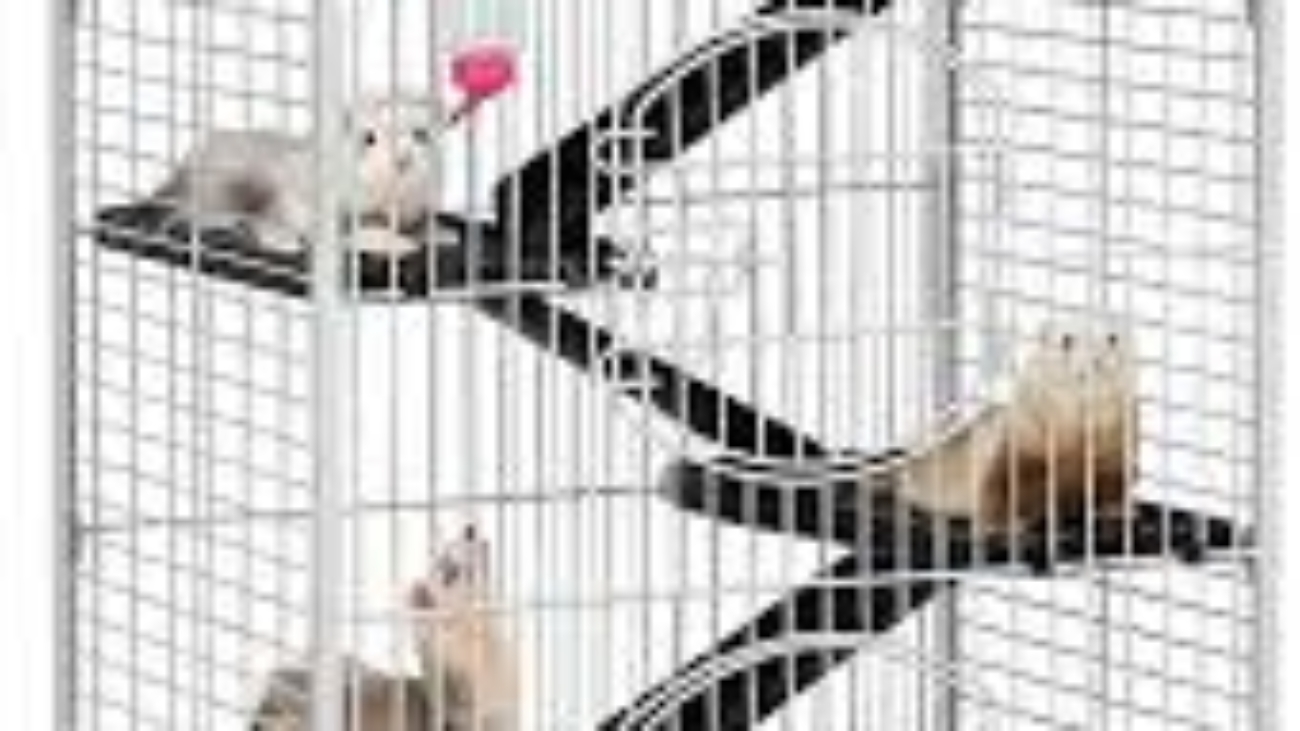Ferret Large Cage, When it comes to providing a comfortable and stimulating environment for your ferret, nothing beats a spacious and well-designed cage. Ferrets are highly energetic and curious animals, and a large cage not only accommodates their need for movement but also allows for the inclusion of various enriching elements. In this article, we’ll explore the key aspects of a ferret’s large cage and how to set it up for maximum enjoyment and well-being.
Size Matters: Why a Large Cage is Essential
Ferrets are active creatures that love to explore, play, and nap throughout the day. A large cage provides them with ample space to engage in natural behaviors such as running, climbing, and digging. The minimum recommended cage size for a single ferret is around 24 inches wide, 24 inches deep, and 18 inches tall. However, larger cages, such as those with dimensions of 36 inches by 24 inches by 24 inches or more, are even better suited for these lively pets.
Multi-Level Design for Vertical Exploration
Ferrets are natural climbers and enjoy vertical space. A multi-level cage design with ramps, shelves, and tunnels not only adds excitement to their environment but also encourages exercise and mental stimulation. Ensure that the ramps are securely attached and have a non-slip surface to prevent accidents.
Safe and Durable Materials
When selecting a cage for your ferret, opt for materials that are sturdy, non-toxic, and easy to clean. Powder-coated wire cages or ferret-specific cages made of durable plastics are excellent choices. Avoid cages with wire flooring, as they can cause foot injuries. Instead, use solid flooring or cover wire floors with fleece or rubber mats for comfort.
Essential Cage Accessories
To make your ferret’s cage a cozy and engaging space, consider adding the following accessories:
- Bedding: Provide soft bedding material such as fleece blankets or bedding designed specifically for ferrets. Avoid using cedar or pine shavings, as they can be harmful to ferrets’ respiratory systems.
- Toys: Include a variety of toys like tunnels, balls, and chew toys to keep your ferret entertained and mentally stimulated.
- Hammocks: Ferrets love to sleep in hammocks, so hang a few at different levels in the cage for them to relax and nap.
- Food and Water Stations: Place food and water bowls in easily accessible locations within the cage. Use ceramic or stainless steel bowls that are sturdy and easy to clean.
- Litter Box: Train your ferret to use a litter box placed in a corner of the cage. Use dust-free, non-clumping litter for safety.
Maintenance and Cleaning
Regular cleaning is essential to keep your ferret’s cage hygienic and odor-free. Spot-clean the cage daily by removing waste and soiled bedding. Replace bedding and wash accessories weekly or as needed. Disinfect the cage using pet-safe cleaning products to prevent the buildup of bacteria and odors.
Conclusion
Investing in a large and well-equipped cage is a crucial step in providing a happy and healthy life for your ferret. By considering the size, design, materials, and accessories discussed in this article, you can create a comfortable and stimulating habitat that meets your ferret’s physical and mental needs. A spacious cage not only promotes physical activity but also enhances your ferret’s overall well-being and happiness.

